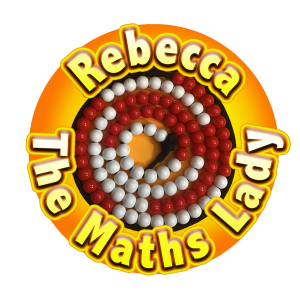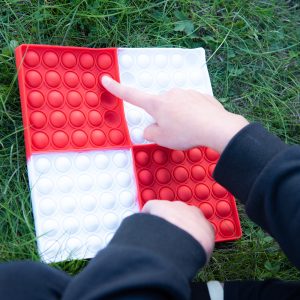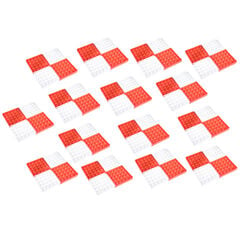When poppits appeared, their huge potential for teaching primary maths was immediately obvious to me.
Education suppliers needed to create poppits that were correctly designed for maths teaching, and I am delighted that TTS have become, so far as I’m aware, the first supplier to do this.
TTS’s 10×10 poppit does everything the well respected 10×10 rekenrek (bead frame) does, but is:
- more fun for children
- more ‘square’ and so it is easier to clearly ‘see’ the maths
- much easier to store
- much more affordable
- and it is therefore much more realistic for schools to purchase and use in class sets.
The three key areas of maths this poppit is powerful in teaching are:
- The numbered 1-100 square
- Adding and subtracting within 100
- Multiplication up to 10×10
1. The numbered 1-100 square (ordinal number).
‘Ordinal number’ is where a number is just one pop. So, for example, 15 is just the 15th pop, not 15 pops.

Great questions to explore this, might be:
- Where is 17?
- Where is 51?
- Where is 67?
Initially, many young children will count up from 1. When they are ready, with appropriate encouragement, they will start to see short cuts. The journey of them making mistakes and discussing these with other children and their teachers will help them lay secure foundations for their understanding of numbers to 100.
The 5×5 squares provide support as children try to think about where numbers are. For example, 7 = 5 (red) +2 (white). Counting 7 objects of the same colour is much harder! This structural understanding of the numbers from six to ten is very important.
Once children can place numbers to 100 on the poppit, we can check:
- can they see the patterns in adding 10, 9, 11, 20, 21, 19 to any number?
- can they see the patterns in subtracting these numbers?
- can they see where the numbers in the 2x, 5x and 10x tables are?
- can they use these patterns to quickly answer questions in these times tables?
2. Adding and subtracting within 100 (cardinal number)
Cardinal numbers are where a number is that many pops. For example, 37 is 37 pops.
Popping 37 pops as quickly as you can is great fun. Children will quickly know 37 is three tens and seven ones!
Once children can ‘pop’ numbers in this way, they can move on to puzzling out additions and subtractions. Once they’ve built confidence with slow strategies for puzzling out their answers, we should encourage them to explain their thinking. Learning is more powerful when children express their thinking in speech. Once they’ve explained their own thoughts, they should be able to listen to others, and understand how different (often quicker) ways of doing the same maths make deep sense.
3. Multiplication up to 10×10
When young children work with array (multiplication as rectangles) they lay down strong foundations for their understanding of multiplication and division.
For example, if you asked children ‘how did you count up 6×6?’ whilst showing this on the poppit.
Children’s answers might include:
- I counted them one at a time
- I moved the top two rows of pops to fill the bottom three rows
- I saw three twelves and I know twelve plus twelve plus twelve is thirty-six
- I can see six fives is thirty and then the extra six makes thirty-six
- I can see twenty-five pops in a square and two fives which is ten and one)
When we ask them to puzzle out divisions with poppits, they know the total number of pops and the length of one side of their rectangle. They simply need to puzzle out the length of the other side.
This helps them to understand that division is:
- finding the missing number in a multiplication,
- counting how many groups you can make which are the size of the number you are diving by, and
- sharing fairly into the number of groups you are diving by and puzzling out the size of a group.
They will also be able to see that division is all these things at the same time!
With many thanks to Rebecca Hanson for writing this blog.
Rebecca Hanson (MA Cantab PGCE MEd FCCT) taught in schools with many challenges and was a successful head of mathematics before she lectured in mathematics education at Manchester Metropolitan University and for the Open University.
She spent six years working to capture and share (through professional development) the very best primary maths teaching going on in the UK. She then shared the most effective, age-appropriate methods for teaching every primary maths topic on her ‘RebeccaTheMathsLady’ YouTube channel, which has over 100k views.







